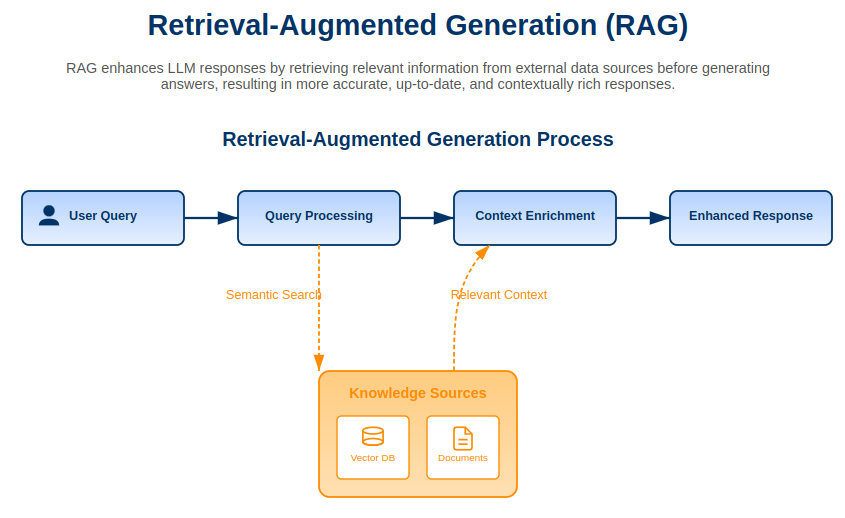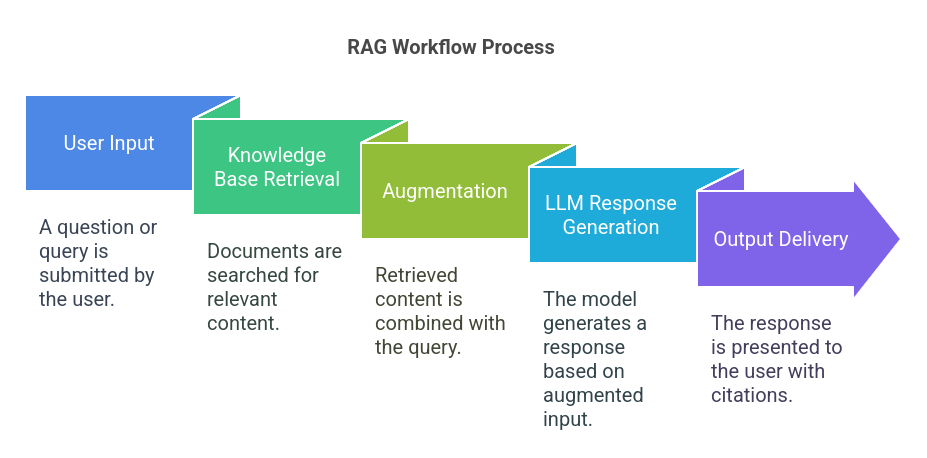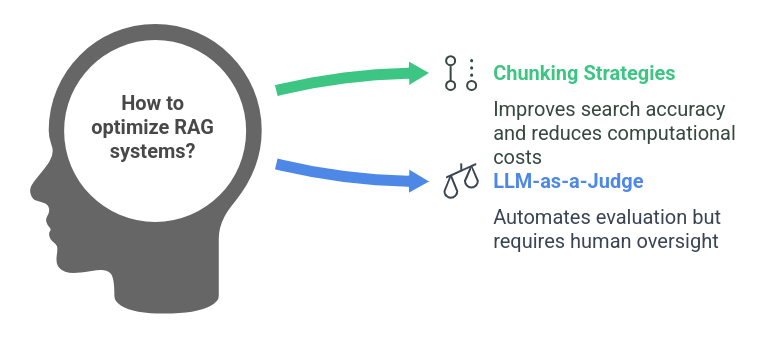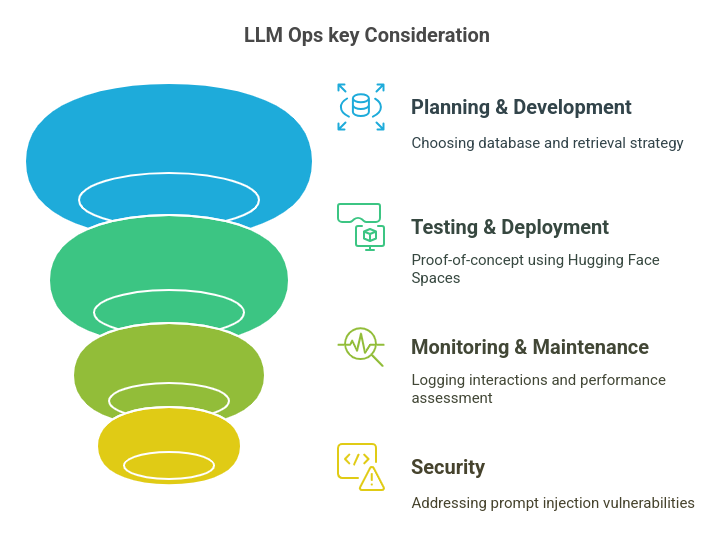Edited & Reviewed By-
Dr. Davood Wadi
(College, College Canada West)
Synthetic intelligence throughout the altering world relies on Massive Language Fashions (LLMs) to generate human-sounding textual content whereas performing a number of duties. These fashions ceaselessly expertise hallucinations that produce pretend or nonsense data as a result of they lack data context.
The issue of hallucinations in synthetic fashions might be addressed via the promising answer of Retrieval Augmented Era (RAG). RAG leverages exterior information sources via its mixture methodology to generate concurrently correct and contextually appropriate responses.
This text explores key ideas from a current masterclass on Retrieval Augmented Era (RAG), offering insights into its implementation, analysis, and deployment.
Understanding Retrieval Augmented Era (RAG)

RAG is an revolutionary answer to boost LLM performance by accessing chosen contextual data from a delegated information database. The RAG methodology fetches related paperwork in actual time to switch pre-trained information programs as a result of it ensures responses derive from dependable information sources.
Why RAG?
- Reduces hallucinations: RAG improves reliability by limiting responses to data retrieved from paperwork.
- More cost effective than fine-tuning: RAG leverages exterior knowledge dynamically as a substitute of retraining massive fashions.
- Enhances transparency: Customers can hint responses to supply paperwork, rising trustworthiness.
RAG Workflow: How It Works
The RAG system operates in a structured workflow to make sure seamless interplay between consumer queries and related data:


- Consumer Enter: A query or question is submitted.
- Information Base Retrieval: Paperwork (e.g., PDFs, textual content information, internet pages) are looked for related content material.
- Augmentation: The retrieved content material is mixed with the question earlier than being processed by the LLM.
- LLM Response Era: The mannequin generates a response primarily based on the augmented enter.
- Output Supply: The response is offered to the consumer, ideally with citations to the retrieved paperwork.
Implementation with Vector Databases
The important nature of environment friendly retrieval for RAG programs relies on vector databases to deal with and retrieve doc embeddings. The databases convert textual knowledge into numerical vector kinds, letting customers search utilizing similarity measures.
Key Steps in Vector-Based mostly Retrieval
- Indexing: Paperwork are divided into chunks, transformed into embeddings, and saved in a vector database.
- Question Processing: The consumer’s question can be transformed into an embedding and matched towards saved vectors to retrieve related paperwork.
- Doc Retrieval: The closest matching paperwork are returned and mixed with the question earlier than feeding into the LLM.
Some well-known vector databases embrace Chroma DB, FAISS, and Pinecone. FAISS, developed by Meta, is particularly helpful for large-scale purposes as a result of it makes use of GPU acceleration for sooner searches.
Sensible Demonstration: Streamlit Q&A System
A hands-on demonstration showcased the ability of RAG by implementing a question-answering system utilizing Streamlit and Hugging Face Areas. This setup offered a user-friendly interface the place:
- Customers might ask questions associated to documentation.
- Related sections from the information base had been retrieved and cited.
- Responses had been generated with improved contextual accuracy.
The appliance was constructed utilizing Langchain, Sentence Transformers, and Chroma DB, with OpenAI’s API key safely saved as an surroundings variable. This proof-of-concept demonstrated how RAG might be successfully utilized in real-world situations.
Optimizing RAG: Chunking and Analysis


Chunking Methods
Despite the fact that trendy LLMs have bigger context home windows, chunking continues to be necessary for effectivity. Splitting paperwork into smaller sections helps enhance search accuracy whereas holding computational prices low.
Evaluating RAG Efficiency
Conventional analysis metrics like ROUGE and BERT Rating require labeled floor fact knowledge, which might be time-consuming to create. Another strategy, LLM-as-a-Choose, includes utilizing a second LLM to evaluate the relevance and correctness of responses.
- Automated Analysis: The secondary LLM scores responses on a scale (e.g., 1 to five) primarily based on their alignment with retrieved paperwork.
- Challenges: Whereas this methodology hurries up analysis, it requires human oversight to mitigate biases and inaccuracies.
Deployment and LLM Ops Concerns
Deploying RAG-powered programs includes extra than simply constructing the mannequin—it requires a structured LLM Ops framework to make sure steady enchancment.
Key Facets of LLM Ops


- Planning & Improvement: Selecting the best database and retrieval technique.
- Testing & Deployment: Preliminary proof-of-concept utilizing platforms like Hugging Face Areas, with potential scaling to frameworks like React or Subsequent.js.
- Monitoring & Upkeep: Logging consumer interactions and utilizing LLM-as-a-Choose for ongoing efficiency evaluation.
- Safety: Addressing vulnerabilities like immediate injection assaults, which try to control LLM habits via malicious inputs.
Additionally Learn: Prime Open Supply LLMs
Safety in RAG Programs
RAG implementations have to be designed with sturdy safety measures to stop exploitation.
Mitigation Methods
- Immediate Injection Defenses: Use particular tokens and thoroughly designed system prompts to stop manipulation.
- Common Audits: The mannequin ought to endure periodic audits to maintain its accuracy as a mannequin element.
- Entry Management: Entry Management programs perform to restrict modifications for the information base and system prompts.
Way forward for RAG and AI Brokers
AI brokers symbolize the following development in LLM evolution. These programs include a number of brokers that work collectively on complicated duties, enhancing each reasoning talents and automation. Moreover, fashions like NVIDIA Lamoth 3.1 (a fine-tuned model of the Lamoth mannequin) and superior embedding strategies are constantly enhancing LLM capabilities.
Additionally Learn: Find out how to Handle and Deploy LLMs?
Actionable Suggestions
For these seeking to combine RAG into their AI workflows:
- Discover vector databases primarily based on scalability wants; FAISS is a robust alternative for GPU-accelerated purposes.
- Develop a robust analysis pipeline, balancing automation (LLM-as-a-Choose) with human oversight.
- Prioritize LLM Ops, guaranteeing steady monitoring and efficiency enhancements.
- Implement safety greatest practices to mitigate dangers, similar to immediate injections.
- Keep up to date with AI developments through assets like Papers with Code and Hugging Face.
- For speech-to-text duties, leverage OpenAI’s Whisper mannequin, notably the turbo model, for top accuracy.
Conclusion
The retrieval augmented era methodology represents a transformative know-how that enhances LLM efficiency via related exterior data-based response grounding. The mix of environment friendly retrieval programs with analysis protocols and deployment safety strategies permits organizations to construct trustable synthetic intelligence options that stop hallucinations and improve each accuracy and safety measures.
As AI know-how advances, embracing RAG and AI brokers might be key to staying forward within the ever-evolving area of language modeling.
For these keen on mastering these developments and studying learn how to handle cutting-edge LLMs, think about enrolling in Nice Studying’s AI and ML course, equipping you for a profitable profession on this area.


